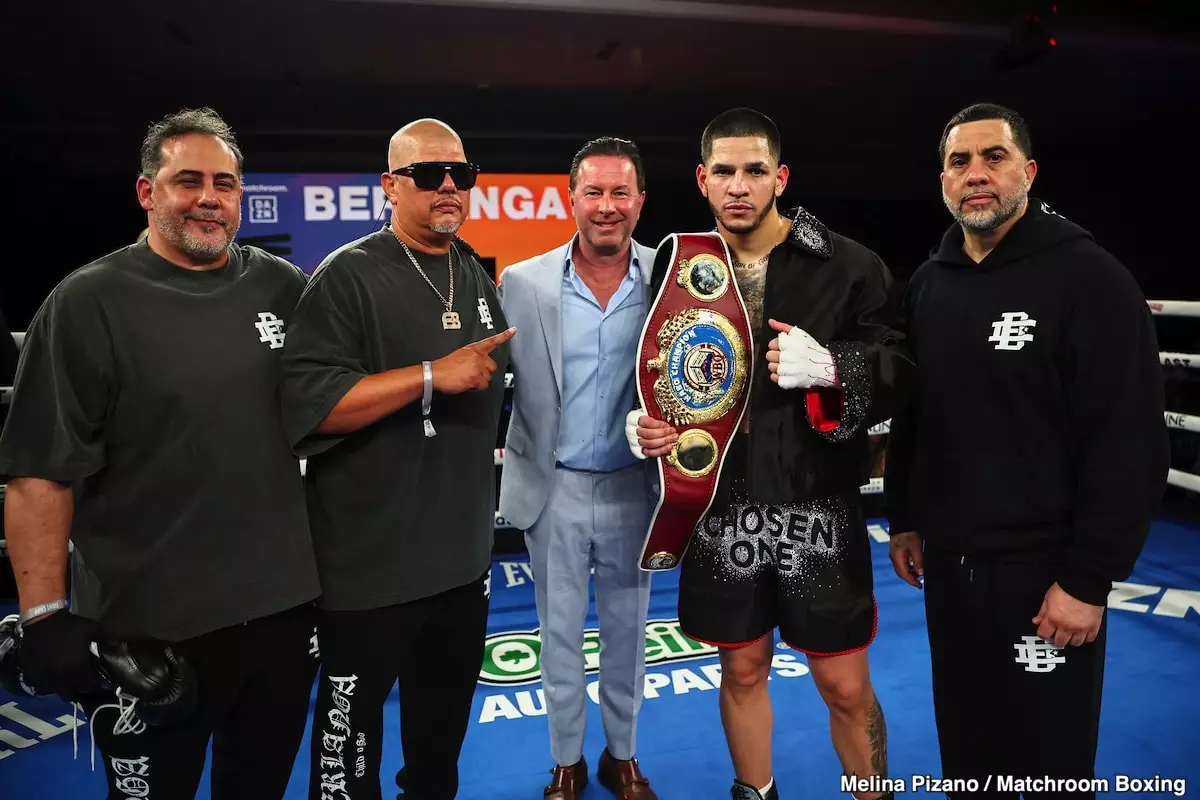In a surprising twist for boxing enthusiasts, Ring Magazine has declared a unique arrangement for the upcoming fight card on July 12th in New York City. Edgar Berlanga will face Hamzah Sheeraz, while Shakur Stevenson takes on William Zepeda. What makes this announcement particularly puzzling is the unequal prominence given to these matchups; although Stevenson’s bout will garner the hype of being the week’s main event, it will be Berlanga vs. Sheeraz that headlines the night. This unorthodox approach raises intriguing questions about how promoters aim to capture the attention of boxing fans in a saturated market.
The fight world is accustomed to a clear hierarchy of main events, typically marked with the clout associated with established fighters and relevant rankings. But here, fans are met with a peculiar challenge: they are expected to accept a co-feature model that bends the traditional narrative. Why choose to promote Stevenson’s bout as the main event throughout fight week only to have it shoved aside for Berlanga and Sheeraz as the headline act?
The Relevance of Fighters and Fan Expectations
As the boxing community gears up for the event, many fans have expressed skepticism regarding the desirability of Berlanga and Sheeraz as headline fighters. Berlanga, with a record of 23 wins and 1 loss, paired with Sheeraz, who stands at 21-0-1, raises eyebrows for their lack of significant victories in notable bouts. In an era where fans demand more than just a flashy ring presence and a marketable persona, drowning the hyped title of ‘main event’ over these two lesser-known fighters seems like an uphill battle for the promoters.
Indeed, many aficionados of the sport may find it difficult to muster enthusiasm for a fight that lacks the true grit and talent they expect. Berlanga and Sheeraz, while undefeated on paper, are often described as more a product of aggressive marketing than genuine talent. Boxing has evolved into a pursuit of authenticity, and fans are tired of being sold an illusion. A bitter pill to swallow for fight fans could likely deter viewership and, by extension, adversely affect pay-per-view purchases.
A Daring Marketing Strategy or a Miscalculation?
From a promotional angle, this curious decision can be interpreted as a strategic gamble. It seems that Ring Magazine’s intention is to create an air of intrigue around the matchups. By leading with Stevenson vs. Zepeda throughout the week, they could attract wrestling-savvy spectators and entice them to purchase the event expecting a highly-anticipated showdown. However, the ultimate reality—Berlanga and Sheeraz sealing the show—could backfire by leaving fans disappointed or confused.
Ultimately, it raises important questions about transparency in boxing promotions. Will the ruse work? It’s certainly a bold move that may attract a certain demographic of fans initially but risks alienating the hardcore audience, who value substance over style. In today’s world of social media and instantaneous access to information, it’s increasingly challenging to conceal underlying truths without facing repercussions. If Tuesday’s fight week social media buzz generates significant pay-per-view sales, the model might arise as a trend. But if the dissatisfaction lingers post-event, this misaligned promotional strategy could endanger future sales—ultimately posing a question that all boxing promoters must consider: Is the end truly worth the means?


Leave a Reply